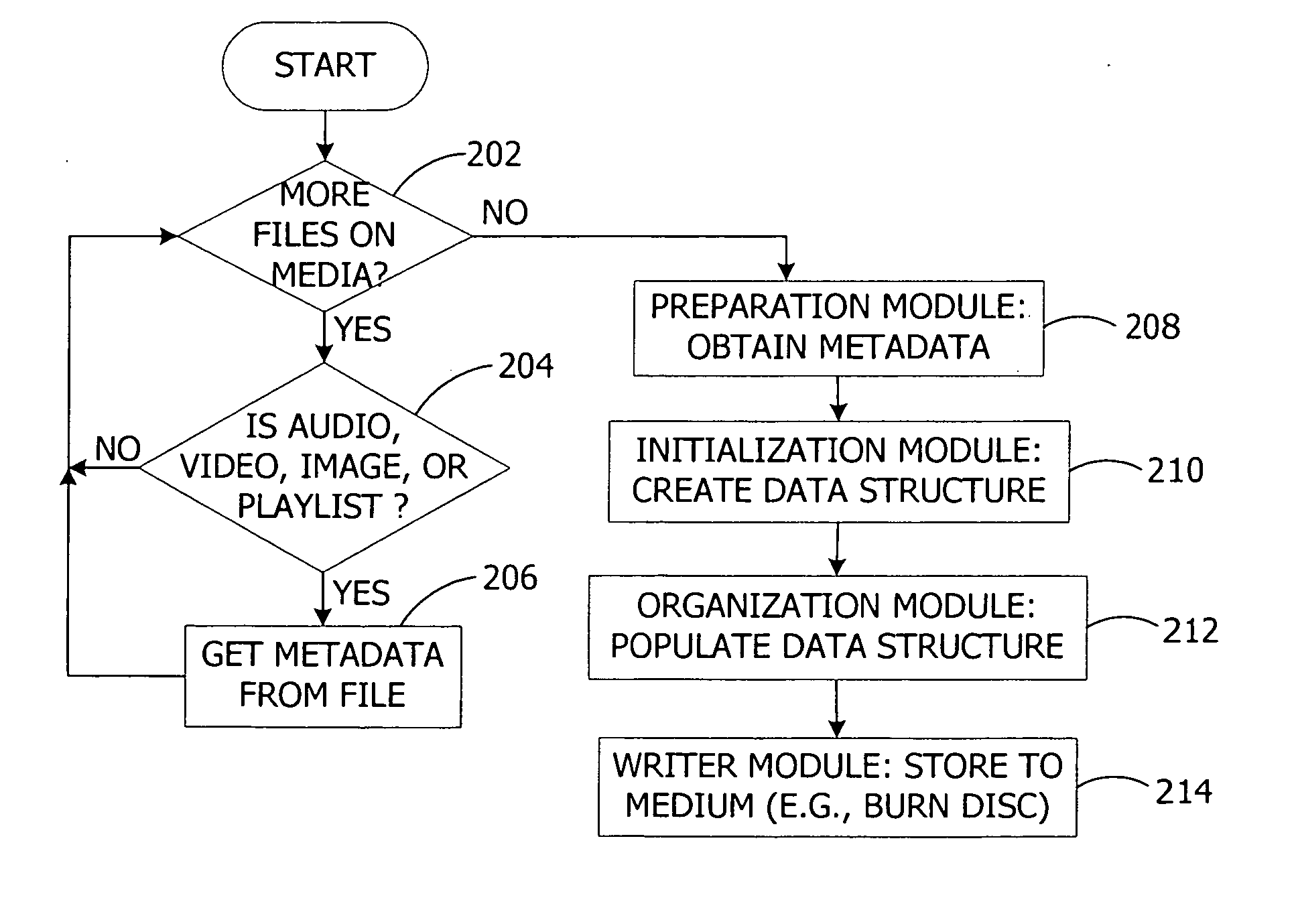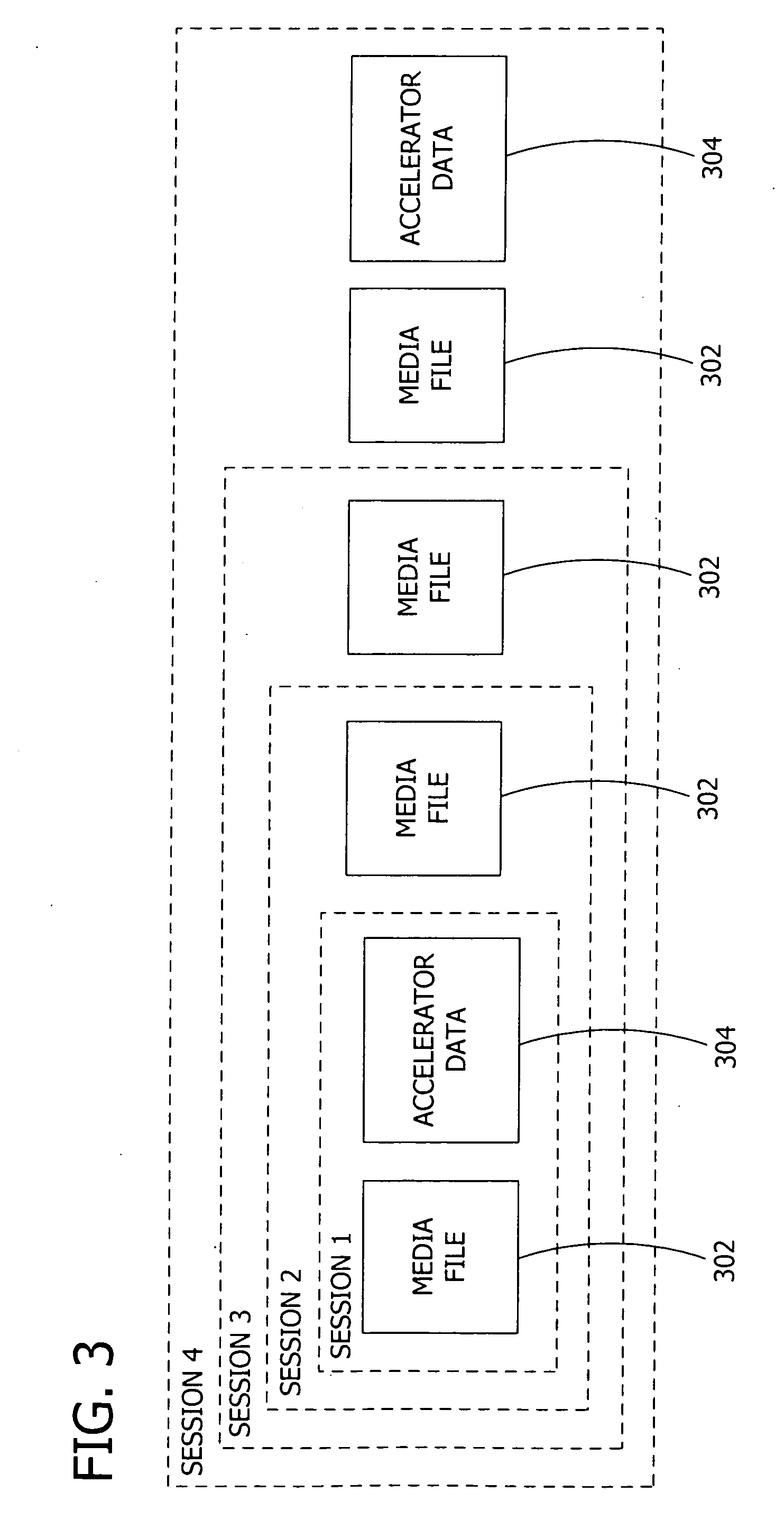Optimizing media player memory during rendering
a media player and memory technology, applied in the field of digital media content, can solve the problems of limited display and user input capabilities, inability to provide the same scope of metadata, and media players that render compressed media content can take a long time to start playback of audio, so as to reduce the number of disk-read operations, reduce the startup time, and efficiently identify the effect of audio
- Summary
- Abstract
- Description
- Claims
- Application Information
AI Technical Summary
Benefits of technology
Problems solved by technology
Method used
Image
Examples
examples
[0081] In one embodiment, the accelerator files exist on the medium under a top-level directory called ‘HIGHMAT’ and includes the exemplary files illustrated in the file system shown in FIG. 7. The accelerator files exist on a medium under a top-level directory called ‘HIGHMAT’ and include the following files: CONTENTS.HMT, nnnnnnnn.HMT, MENU.HMT, and TEXT.HMT. The CONTENTS.HMT file contains information about all the media files present on the medium. It contains a directory table, followed by the file entry tables for each of the supported file types (Audio, Video, Image and Playlist). There is one file for each playlist on the medium called ‘nnnnnnnn.HMT’ where nnnnnnnn is a hexadecimal playlist file identifier. These playlist files are created in a ‘PLAYLIST’ subdirectory. The MENU.HMT file contains the menu structure. The TEXT.HMT file contains all the textual information needed during playback.
[0082] In alternative embodiment, the following files are included: .HMT and .HMT. T...
PUM
| Property | Measurement | Unit |
|---|---|---|
| time | aaaaa | aaaaa |
| data structure | aaaaa | aaaaa |
| distance | aaaaa | aaaaa |
Abstract
Description
Claims
Application Information
 Login to View More
Login to View More - R&D
- Intellectual Property
- Life Sciences
- Materials
- Tech Scout
- Unparalleled Data Quality
- Higher Quality Content
- 60% Fewer Hallucinations
Browse by: Latest US Patents, China's latest patents, Technical Efficacy Thesaurus, Application Domain, Technology Topic, Popular Technical Reports.
© 2025 PatSnap. All rights reserved.Legal|Privacy policy|Modern Slavery Act Transparency Statement|Sitemap|About US| Contact US: help@patsnap.com



